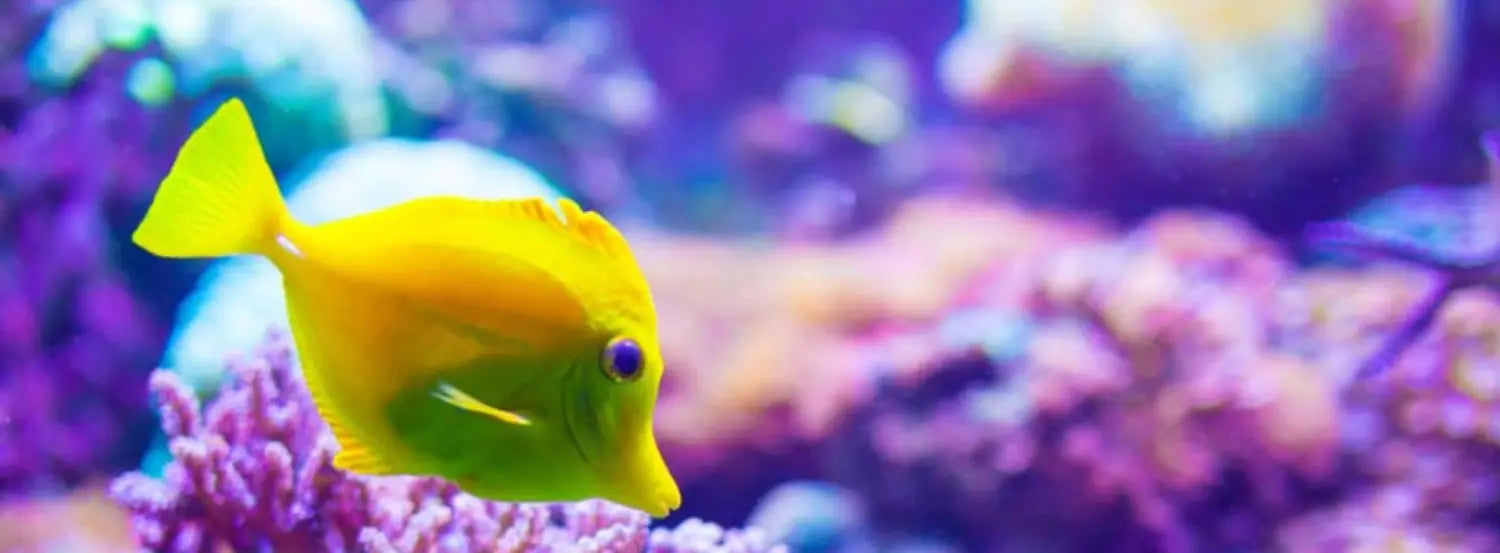Welcome to the mesmerizing world of the yellow tang (Zebrasoma flavescens), a vibrant and captivating species of fish that has captured the hearts of marine enthusiasts worldwide. With its striking yellow coloration and graceful movements, this fish is not only a breathtaking sight in the ocean but also a beloved resident of many saltwater aquariums. In this comprehensive guide, we will explore the fascinating life of the yellow tang, from its taxonomy and biology to its conservation status and care in an aquarium setting.
The Yellow Tang's Origins
This beautiful creature was first described by the English naturalist Edward Turner Bennett in 1828, based on a collection from the Hawaiian Islands. Its scientific name, Zebrasoma flavescens, combines the genus name Zebrasoma, which refers to the zebra-like stripes found on other fish in the genus, and the species epithet flavescens, which highlights the tang's vibrant yellow look.

The Tang's Ancestral Connections
Through genetic studies, researchers have uncovered the evolutionary relationships within the genus Zebrasoma. One such study utilized the gene Cytochrome C-oxidase 1 (CO1) to reconstruct the phylogenetic tree of the genus and shed light on the tang's genetic lineage.
Description and Biology: Some Fascinating Features
The yellow tang is a medium-sized fish that can reach lengths of up to 20 centimeters. Its bright yellow coloration is a defining characteristic, but it also undergoes subtle changes at night, developing a brownish patch and a horizontal white band. The tang possesses five dorsal spines and 23-26 dorsal soft rays, along with three anal spines and 19-22 anal soft rays. Its snout is moderately protruding, and its mouth contains spatulate teeth.

In the wild, yellow tangs are primarily herbivorous, feeding on filamentous algae and other marine plant material. This diet plays a crucial role in maintaining the delicate balance of the reef ecosystem. In captivity, they are commonly fed a combination of meat-based and plant-based aquarium food to ensure their nutritional needs are met.
Reproduction: A Dance of Life Under the Moonlight
Yellow tangs engage in spawning throughout the year, with a peak period coinciding with the full moon. Spawning can occur in pairs or groups, and fertilization is external. The eggs are left in open water, and the tangs do not guard them. Once the eggs hatch, the juveniles receive no parental care.
The Tang's Marine Playground

The yellow tang is commonly found in shallow reefs, ranging from 2 to 46 meters deep, in the Pacific Ocean. Its natural habitat extends from the Hawaiian Islands to the Ryukyu, Mariana, Marshall, Marcus, and Wake Islands. There have also been reports of them being found off the coast of Florida in the Western Central Atlantic. The tang's preferred temperature range is between 24 and 28 degrees Celsius.
Threats: A World of Challenges
This fish faces various natural predators, including larger fish, sharks, crabs, and octopuses. However, human activities pose an even greater threat to their survival. Habitat destruction, pollution, harmful fishing practices, overfishing, and coral harvesting all contribute to the decline of its populations. However, efforts are being made to protect this species through the establishment of marine protected areas and the breeding of yellow tangs in captivity.
Conservation Status: A Balance Between Beauty and Preservation

The yellow tang is currently classified as "Least Concern" by the International Union for Conservation of Nature (IUCN). However, ongoing conservation efforts are essential to ensure the long-term survival of this iconic species. The captive breeding of yellow tangs has helped reduce the collection of wild individuals and has provided a sustainable source for aquarium enthusiasts.
The Aquarium: Bringing the Ocean's Jewel Into Your Home
This beautiful creature is a highly sought-after fish for saltwater aquariums, thanks to its vibrant coloration and captivating presence. In recent years, advancements in captive breeding have made it easier to obtain yellow tangs that are bred in captivity, reducing the pressure on wild populations. When keeping yellow tangs in an aquarium, it is crucial to provide them with a well-maintained tank, a balanced diet, and suitable tankmates.
A Living Symbol of the Ocean's Splendor

This tang's elegant beauty and graceful nature make it a cherished symbol of the ocean's splendor. Whether encountered in the wild or admired in an aquarium, the yellow tang leaves a lasting impression on all who encounter it. By appreciating and understanding this remarkable species, we can contribute to its conservation and ensure the preservation of the ocean's natural wonders for generations to come.
If you wish to discover more cute and beautiful species like this one, feel free to click here !
Our last word...
As you embark on your journey to discover the enchanting world of the yellow tang, remember to approach it with awe and respect. The ocean is a vast and mysterious place, and this beauty is but one of its many treasures. Let the vibrant colors and graceful movements of the yellow tang inspire you to explore the depths of the marine world and embrace the wonders that await beneath the waves.
We hope you've liked this article about the yellow tang!
Feel free to subscribe to our private newsletter to receive more exclusive article. You will also receive a 10% bonus discount for our sea world catalogue. You will be notified via email whenever we release a new wonderful jewelry piece of the ocean.
Feel free also to go check out our website, we provide the best sea content and we offer you the best nautical jewelry all around the globe !





















